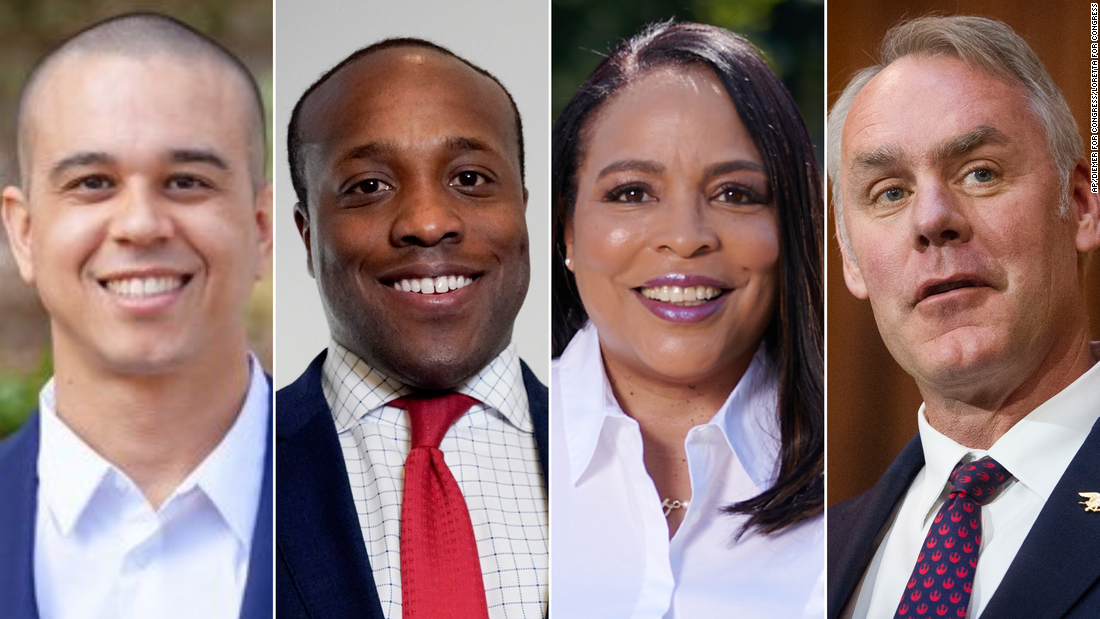A data delay has politicians launching congressional bids without even knowing their opponent
Smith and Hunt are among a growing group of politicians from both parties who, because of a delayed release of the district-level data from the 2020 US Census needed for each state to complete the redistricting process, have announced congressional bids without knowing which district they will be running in. The delay has created a unique set of announcements across the country, with people like Hunt announcing the area they plan to represent, but not the district or opponent they could face. Although many politicians are impacted by this delay, the feeling is particularly acute for first-time candidates and those challenging incumbents.
The reason neither are waiting is simple: Running for Congress as a challenger isn’t easy and the time it takes to build an organizing and fundraising operation is critical.
“These seats don’t come up too often and the Constitution gives me the right to file and run as long as I am a resident of the state,” said Smith, a former county commissioner for Multnomah County, Oregon’s most populous county. She added that, like others who are announcing runs without a specific district, she wanted to get a jump on her campaign “because it is so hard and so expensive to run one of these congressional campaigns.”
Hunt, who unsuccessfully ran for Congress in 2020, made his latest congressional campaign official on Wednesday. But the press release about his run nodded to the fact that he has yet to select his district.
“Hunt intends to run in West Houston,” read his campaign release, “and will announce the district he intends to campaign for as soon as Texas releases the newly redrawn Congressional district lines.”
Smith and Hunt are far from alone, too, especially in states that are slated to either gain or lose a congressional seat.
In Ohio, for example, a state that is slated to lose one congressional seat, multiple Democrats are announcing campaigns for Congress without knowing the exact lines of the district they hope to run in. That includes first-time candidate Matthew Diemer, who announced a planned congressional bid for the state’s 16th congressional district earlier this year. In Montana, a state gaining a district, former Interior Secretary Ryan Zinke filed paperwork to run for the state’s 2nd district despite not knowing exactly where the lines will be drawn. And he isn’t alone in that race: Democrat State Rep. Laurie Bishop and Republican Rep. Al Olszewski both intend to run for the new seat.
The list of problems the Census delay has created is long, but none is more pressing to people like Diemer than the time it takes to build a legitimate campaign operation.
“It complicates things,” Diemer said about announcing a bid without knowing the district. “Even though I am talking to a lot of people, everyone is a little hesitant and ask if we are going to be in the district.”
Why announce without a district
Amid the coronavirus pandemic, the census count was delayed by months — subsequently pushing back the redistricting process that relies on that data.
One of the issues faced by candidates without districts is skepticism from supporters who don’t know whether the politician will be vying to represent them.
Some longtime donors, for example, have asked Smith how she could start to run without knowing the district she would be representing.
“A couple of them have said let’s see what the district looks like and where it is because, for whatever reason they want to see if they are in the district,” she said. “It doesn’t matter, because they can give money even if they are not in the district.”
Smith, who, should she win, would be Oregon’s first Black congresswoman, said with all that it takes to mount a successful campaign, waiting wasn’t an option for her.
“I am excited, I am up for it,” she said. “This is the race I have always wanted to run for and win.”
The opportunities of being district-less
The unknowns around running for Congress without a specific district have also presented candidates with opportunities.
When Danny O’Connor, the current Franklin County recorder who unsuccessfully ran for Congress around Columbus in 2018, announced a planned congressional bid earlier this year, he was unable to identify the Republican he would be facing off against — and has since fundraised off a possible run against Rep. Jim Jordan, an outspoken supporter of former President Donald Trump.
Because Jordan is such a lightning rod for the left, the tweet earned O’Connor nearly 8,000 retweets. His announcement video had garnered just over 300 retweets.
For Diemer, another Ohio Democrat running without a set district, part of the reason for getting in so early was because Republicans in the district were already out campaigning against each other and pushing their message. Diemer is looking to run against current incumbent Rep. Anthony Gonzalez in a district that includes part of suburban Cleveland and rural areas in Northeast Oho. But Gonzalez, after voting to impeach Trump earlier in the year, has drawn the ire of Republicans and already has two challengers in the primary, including a former Trump aide whom the former Republican president has endorsed.
Diemer said he knew he wanted to run and got in early because he began to see Republican groups organizing meetings and Trump visiting the district to rally against Gonzalez.
“Trump is trying to stack the Congress in his favor, and we need people to come out and just run against that,” Diemer said. “People want to see that there are people stepping up. … These early organizers by GOP groups in the state, people look at them and say they are already the winners.”
Diemer’s goal in getting in now is to convince people that “no, you do have choices, it is not locked in that this is a red district,” no matter what it looks like on Election Day in 2022.
![]()


